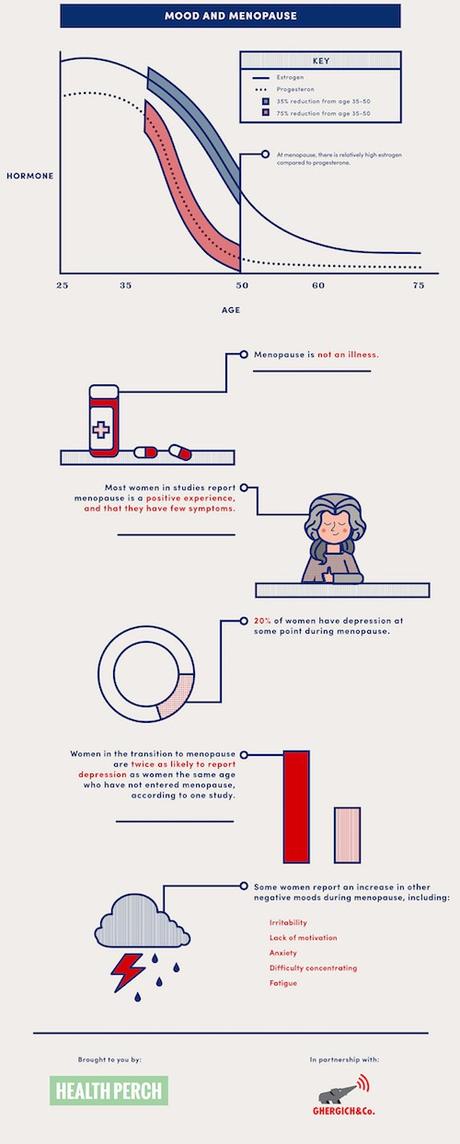
Maelstrom © lynette sheppard
There are powerful things at work in each of our bodies that help regulate the most basic and the most complex of things. Take hormones, for instance: They regulate our growth and they impact our immune system. When it comes to estrogen and progesterone in females, they also control our reproductive processes.
But hormones have long gotten a bad rap, as a reason that women have to ride an emotional roller coaster every month based on their cycle or as changes occur in menopause. The question is—is that reputation that hormones have deserved?
Research suggests a strong maybe, although the link may not be as definitive as once thought. For starters, some women may be more in tune with those hormone level fluctuations, which means that the levels may have more impact on how they feel. And how they feel may also depend on the phase of their cycle and how they experience menopause.
To learn more, check out this helpful graphic shared by Health Perch in partnership with Ghergich and Co.

Health Perch offers these helpful suggestions for dealing with hormonal mood swings:
Balancing Act
If you feel like your hormones are holding you hostage, some relatively simple lifestyle changes may help.
1. Pay attention
Keep a diary of your symptoms for a few months. All women are different, and the only way to understand your moods is to record them and analyze the data. It may bring relief to observe that menopausal mood swings don’t last forever.
2. Eat up
Studies suggest women with hormone fluctuations may be deficient in calcium and magnesium. Foods rich in vitamin B6, omega 3 fatty acids, and zinc may also help prevent mood swings, according to some experts. It can’t hurt to eat a more nutrient-dense diet. Reach for vegetables, leafy greens, beans, seeds, nuts, legumes, whole grains, poultry, seafood and seaweed, and fish.
3. Improve sleep habits
Some women report insomnia when estrogen and progesterone levels plummet; 40 to 50 percent of women experience insomnia during menopause. Women with sleep disturbances are more likely to feel stressed out, tense, anxious, or depressed. To improve your odds of a good night of sleep, make your room dark, quiet, and cool, and stick to routine sleep and waking times.
4. Move more
In one study, eight weeks of aerobic training significantly reduced participants’ premenstrual symptoms. Choose physical activities you enjoy since the point is to feel good.
5. Manage stress
Women who experience stress early in a menstrual cycle are more likely to experience mood swings later in the cycle, according to a study. The same goes for menopause. Walking, mindfulness exercises, visiting nature, and hanging out with friends are proven ways to reduce stress.
6. Reduce caffeine and alcohol
In studies, caffeine has been shown to decrease feelings of relaxation and increase ratings of anxiousness, tenseness, and nervousness. Alcohol may interfere with estrogen detoxification (which could be why it’s associated with a higher risk of breast cancer). Reach for a drink, such as water or herbal tea, that helps you feel calm.
If you experience mood swings that interfere with your daily life and these healthy makeovers don’t help, it may be time to check in with your doctor or naturopath. Herbs, such as chaste tree and red clover, vitamin supplements, or medical treatments may help.
Conclusion
Hormonal changes should not be used to discount or discriminate against women or medicalize normal life changes. However, it doesn’t serve women to pretend our bodies and moods stay constant through the course of a lifetime. Whether the subject is menstruation, menopause, moods, or other topics, we should take women’s health seriously. Recognizing and understanding hormonal fluctuations may help women move through their lives with more awareness and ease.
You can find lots more health and wellness information on Health Perch: click here to go to their website.

